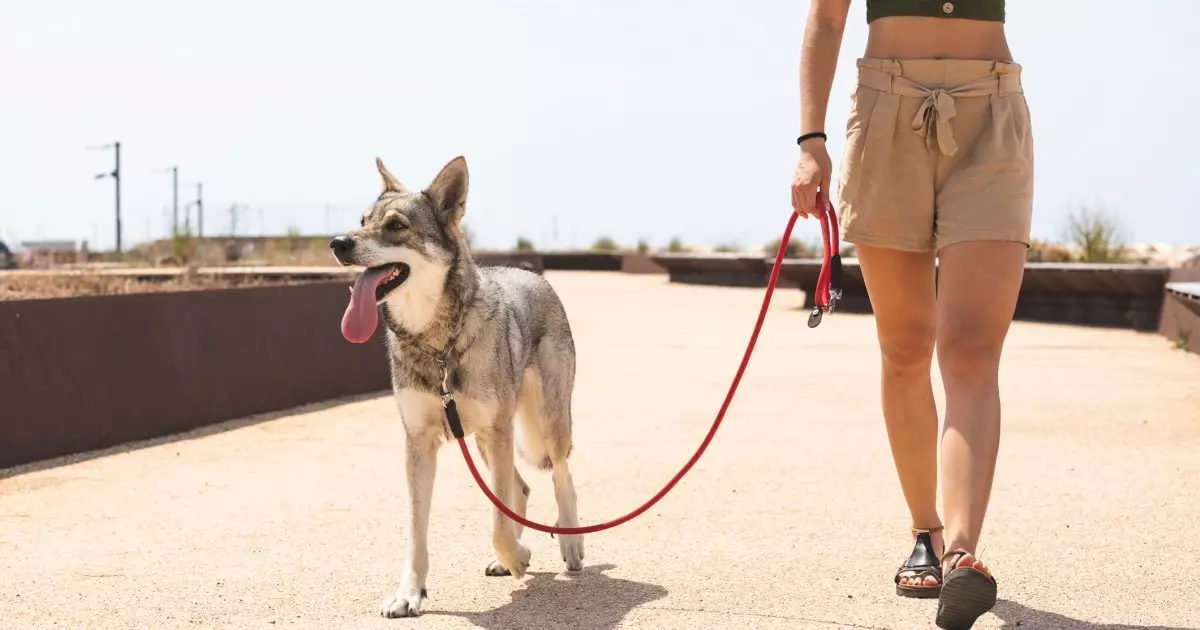Walking your dog is more than just a routine chore; it’s an opportunity to strengthen the bond between you and your canine companion while ensuring their physical health and mental well-being. However, many pet owners often grapple with the question of whether their dog should walk beside them or in front. This article delves into the impact of walking arrangement and its implications on canine behavior, bond development, and effective training.
When you take your dog out for a walk, the arrangement of the leash—specifically whether your dog walks in front of you or beside you—plays a crucial role in shaping the walking experience. Dogs are instinctively predisposed to explore their environment through sniffing, and when they are allowed to lead the way, they may naturally pull on the leash. This pulling isn’t merely a sign of disobedience or a lack of training; it is often a manifestation of their desire to engage with the world around them. However, this behavior can lead to several challenges, including a frustrating walk for the owner and potential safety hazards.
To mitigate this, dog owners can utilize training tools such as front-clip harnesses or head halters. These devices can significantly reduce pulling behavior while empowering the owner to maintain control. The key is not just in the equipment used, but also in the approach to training and walking itself.
A common misconception among dog owners is the “alpha dog” theory, which asserts that pet owners must present themselves as the dominant figure in the relationship for effective training and guidance. This old-school perspective suggests that allowing your dog to walk ahead establishes a hierarchy where the dog assumes a position of superiority. However, modern canine behaviorists widely dismiss this theory, arguing that dogs are social creatures whose behavior is more influenced by positive interactions rather than rigid hierarchies.
Instead of asserting dominance, a more effective approach involves fostering a partnership based on trust and communication. When dogs are trained with fear or coercion, the results can be detrimental. Such methods can damage the trust between you and your pet, leading to behavioral issues that may require additional training to correct.
Walking your dog beside you offers numerous benefits that transcend mere physical exercise. When dogs walk alongside their owners, it creates an atmosphere of cooperation, allowing both parties to engage in meaningful interactions. This arrangement enhances communication, as the dog can more easily observe cues from the owner, fostering attentive behavior and quicker responsiveness to commands.
Structured walks can also serve as prime opportunities for ongoing training. Commands like “heel” or “leave it” can be practiced in a real-world setting, reinforcing good behaviors while you stroll together. Positive reinforcement—through treats, praise, or affection—can transform these training moments into enjoyable experiences, further strengthening the bond between you and your dog.
Ultimately, the goal of any walking routine should be a joyful experience for both you and your furry friend. Every dog is unique, with different personality traits and tendencies. Therefore, the best approach to dog walking considers these individual differences. It’s important to observe and provide experiences appropriate for your dog’s temperament, energy level, and health concerns.
As you walk at your side, you not only pave the way for desirable behavior but also create a structured environment where your dog feels secure. By cultivating this trust and understanding, you can effectively transform the mundane act of walking into an enriching and enjoyable part of your daily routine.
Your dog should walk beside you, integrating trust, communication, and positive reinforcement. This benefits the relationship you share and contributes positively to their behavior and overall happiness, making every walk a rewarding experience for both owner and pet.

